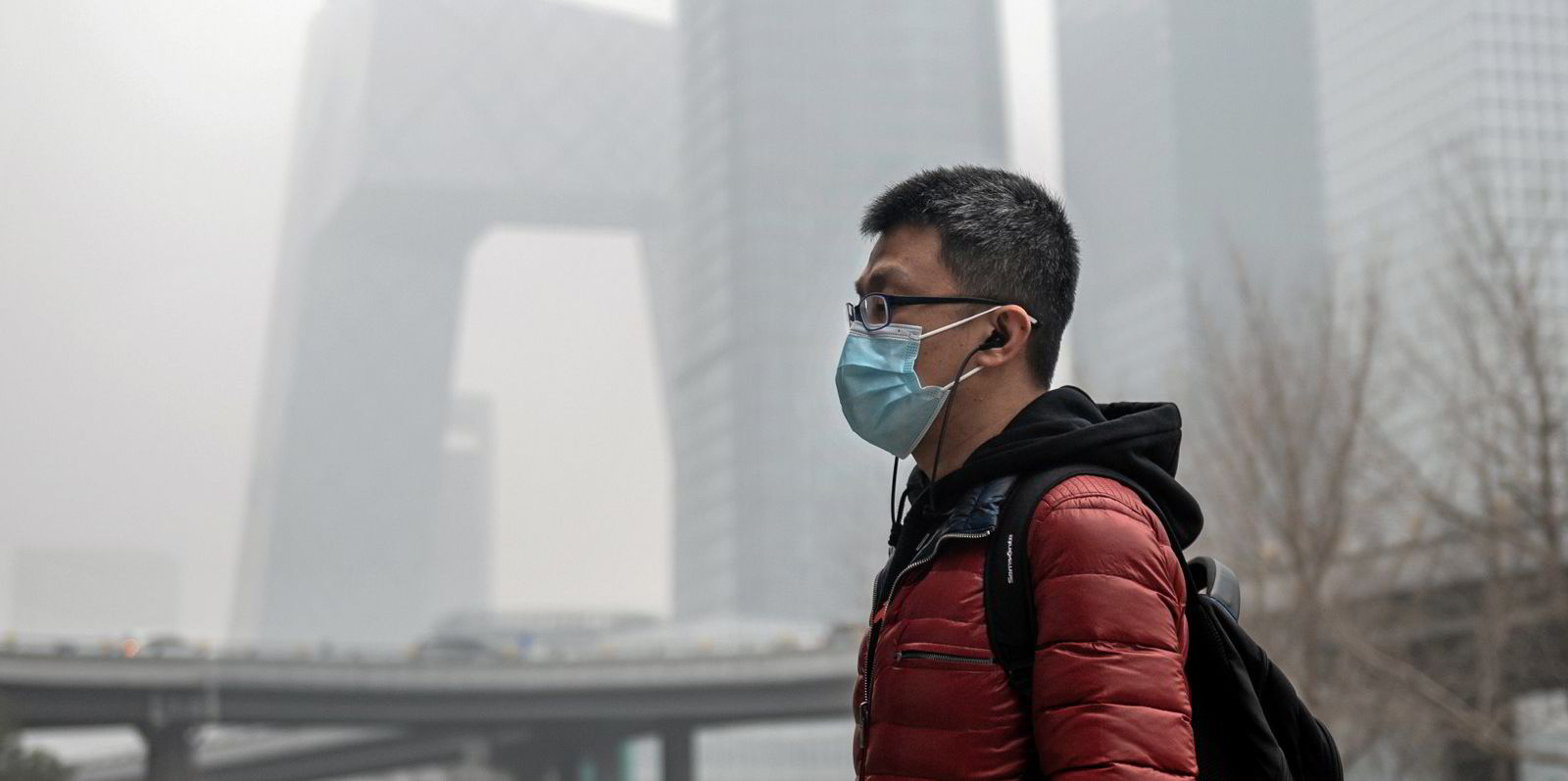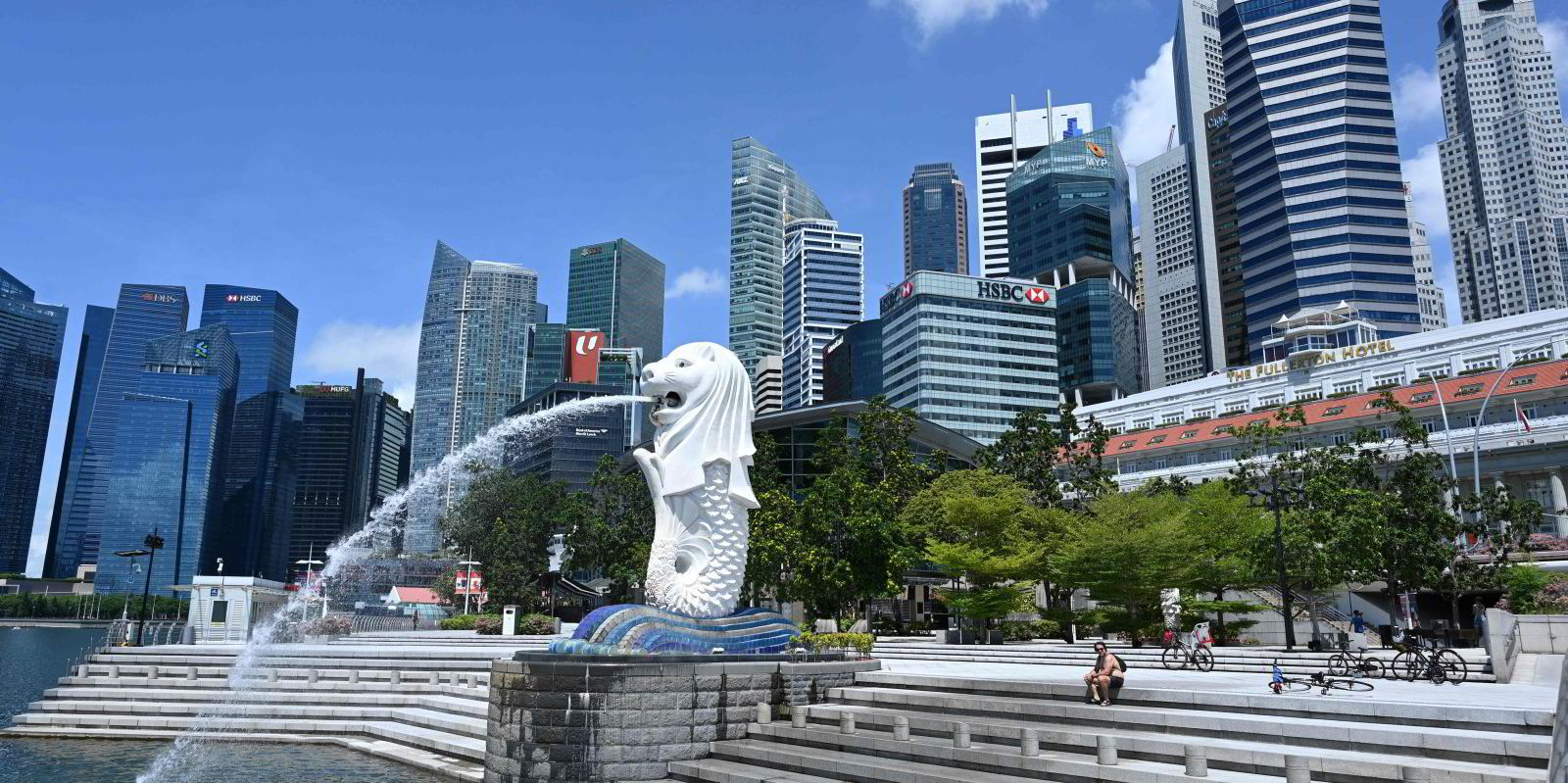Shell mulls Singapore carbon capture hub and biofuels plant

Set for transformation: Shell's Pulau Bukom petrochemical complex in Singapore
Photo: REUTERS/SCANPIX
Announcement comes as Singaporean government sets target of capturing 2 million tpa of CO2 from the energy and chemicals sector on Jurong Island
Anglo-Dutch supermajor Shell is exploring the possibility of a carbon capture and storage (CCS) hub and biofuels plant at its petrochemical complex in Singapore.
Shell revealed on Tuesday it was eyeing the potential for a regional CCS hub at its manufacturing site in Pulau Bukom, as part of the site’s transformation to the Shell Energy and Chemicals Park Singapore.
Shell added it intended to work with a range of customers, including in the power sector, to reduce carbon dioxide emissions from their operations via the CCS hub.
The proposed hub could facilitate the design and production of lower-carbon fuels, chemicals, and energy solutions such as hydrogen, Shell claimed.
In response to questions from Upstream, a Shell spokesperson said: “We are currently exploring promising storage sites in the region and will share more in due course.
“In addition to identifying viable storage locations, we look for locations that have standards and regulations for operating CO2 storage sites.”
Article continues below the advert
Asian biofuels
The supermajor is also planning to build a 550,000 tonne per annum biofuels facility at the Shell Energy and Chemicals Park Singapore, subject to a final investment decision.

Shell teams up to advance decarbonisation solutionsRead more
Shell said the facility would make hydrogen from renewable resources and bio-feedstock, such as used cooking oils and animal fats, that could then be turned into low-carbon fuels, such as sustainable aviation fuel (SAF), renewable diesel for road transport or renewable chemicals.
“It would be one of Asia’s largest biofuels facilities, and supports Shell’s ambition to produce around 2 million tonnes of SAF a year by 2025 and have at least 10% of its global aviation fuels sales as SAF by 2030,” a Shell spokesperson told Upstream.
“SAF currently accounts for around 0.1% of global aviation fuel. If built, the biofuels unit in Singapore will help increase SAF production, which is vital if aviation is to cut carbon emissions.”
The initiatives form part of a range of projects being explored at the Shell Energy and Chemicals Park Singapore to deliver low-carbon energy solutions to customers, as well as to meet its target of halving its own emissions by 2030.
Pyrolysis oil upgrader
Shell also revealed on Tuesday that it is building a new pyrolysis oil upgrader unit at its site on Pulau Bukom that, it claims, will be the largest in Asia and Shell’s first globally.
The unit will improve the quality of pyrolysis oil, a liquid made from difficult-to-recycle plastic waste that would have gone into a landfill, and turns it into chemical feedstock for the plant, with Shell to use the treated pyrolysis oil to produce circular chemicals it says are used in everyday products, such as tyres and mattresses.

Singapore ratchets up plan to become carbon services hubRead more
Shell’s new unit is slated to come online in 2023 and will have a capacity of 50,000 tpa, with the processing capacity is equivalent to the weight of about 7.8 billion plastic bags.
The Shell Energy and Chemicals Park Singapore will be fully integrated with Shell Jurong Island, with the energy and chemicals facilities to then focus on supplying biofuels, circular chemicals, bitumen, advanced lubricants and renewable energy.
“Shell’s strategy is to accelerate our transformation into a provider of net-zero emissions energy products and services,” Shell downstream director Huibert Vigeveno said.
“As a key global hub for Shell, Singapore has a very important role to play in this. Together, these investments will help us to cut carbon emissions at our operations and provide the low-carbon and circular solutions that our customers want, in sectors ranging from chemicals to automotive to aviation.”
Sustainable Jurong Island Plan
The Singaporean government also unveiled its Sustainable Jurong Island Plan alongside Shell’s announcement which sets out “aspirational targets” for the energy and chemicals sector on the island, where, in addition to Shell, other international majors such as ExxonMobil have operations.

Singapore seeks partnerships to meet low-carbon challengeRead more
The targets being set out in the report released by Singapore’s Economic Development Board include realising at least 2 million tonnes of carbon capture by 2030, with hopes to achieve more than 6 million tpa of carbon abatement “from low-carbon solutions” by 2050.
The report states that, given the high cost of carbon capture from low-concentration emissions, the government will focus on the capture potential of higher-concentration streams in the near term and explore technologies that can sequester carbon from low-concentration streams directly in the future.
The government intends to invest in the research and development of emerging technologies, such as membranes and solid adsorption materials, an is inviting industry to develop and test carbon capture technologies in Singapore.
The Sustainable Jurong Island Plan also sets a target of increasing the output of sustainable products from Jurong Island by 1.5 times, from 2019 levels, by 2030 and fourfold increase by 2050.
It also has set a target of ensuring that refineries and crackers at Jurong are “in the top quartile of the world in terms of energy efficiency”.(Copyright)
Announcement comes as Singaporean government sets target of capturing 2 million tpa of CO2 from the energy and chemicals sector on Jurong Island
Anglo-Dutch supermajor Shell is exploring the possibility of a carbon capture and storage (CCS) hub and biofuels plant at its petrochemical complex in Singapore.
Shell revealed on Tuesday it was eyeing the potential for a regional CCS hub at its manufacturing site in Pulau Bukom, as part of the site’s transformation to the Shell Energy and Chemicals Park Singapore.
Shell added it intended to work with a range of customers, including in the power sector, to reduce carbon dioxide emissions from their operations via the CCS hub.
The proposed hub could facilitate the design and production of lower-carbon fuels, chemicals, and energy solutions such as hydrogen, Shell claimed.
In response to questions from Upstream, a Shell spokesperson said: “We are currently exploring promising storage sites in the region and will share more in due course.
“In addition to identifying viable storage locations, we look for locations that have standards and regulations for operating CO2 storage sites.”
Article continues below the advert
Asian biofuels
The supermajor is also planning to build a 550,000 tonne per annum biofuels facility at the Shell Energy and Chemicals Park Singapore, subject to a final investment decision.

Shell teams up to advance decarbonisation solutionsRead more
Shell said the facility would make hydrogen from renewable resources and bio-feedstock, such as used cooking oils and animal fats, that could then be turned into low-carbon fuels, such as sustainable aviation fuel (SAF), renewable diesel for road transport or renewable chemicals.
“It would be one of Asia’s largest biofuels facilities, and supports Shell’s ambition to produce around 2 million tonnes of SAF a year by 2025 and have at least 10% of its global aviation fuels sales as SAF by 2030,” a Shell spokesperson told Upstream.
“SAF currently accounts for around 0.1% of global aviation fuel. If built, the biofuels unit in Singapore will help increase SAF production, which is vital if aviation is to cut carbon emissions.”
The initiatives form part of a range of projects being explored at the Shell Energy and Chemicals Park Singapore to deliver low-carbon energy solutions to customers, as well as to meet its target of halving its own emissions by 2030.
Pyrolysis oil upgrader
Shell also revealed on Tuesday that it is building a new pyrolysis oil upgrader unit at its site on Pulau Bukom that, it claims, will be the largest in Asia and Shell’s first globally.
The unit will improve the quality of pyrolysis oil, a liquid made from difficult-to-recycle plastic waste that would have gone into a landfill, and turns it into chemical feedstock for the plant, with Shell to use the treated pyrolysis oil to produce circular chemicals it says are used in everyday products, such as tyres and mattresses.

Singapore ratchets up plan to become carbon services hubRead more
Shell’s new unit is slated to come online in 2023 and will have a capacity of 50,000 tpa, with the processing capacity is equivalent to the weight of about 7.8 billion plastic bags.
The Shell Energy and Chemicals Park Singapore will be fully integrated with Shell Jurong Island, with the energy and chemicals facilities to then focus on supplying biofuels, circular chemicals, bitumen, advanced lubricants and renewable energy.
“Shell’s strategy is to accelerate our transformation into a provider of net-zero emissions energy products and services,” Shell downstream director Huibert Vigeveno said.
“As a key global hub for Shell, Singapore has a very important role to play in this. Together, these investments will help us to cut carbon emissions at our operations and provide the low-carbon and circular solutions that our customers want, in sectors ranging from chemicals to automotive to aviation.”
Sustainable Jurong Island Plan
The Singaporean government also unveiled its Sustainable Jurong Island Plan alongside Shell’s announcement which sets out “aspirational targets” for the energy and chemicals sector on the island, where, in addition to Shell, other international majors such as ExxonMobil have operations.

Singapore seeks partnerships to meet low-carbon challengeRead more
The targets being set out in the report released by Singapore’s Economic Development Board include realising at least 2 million tonnes of carbon capture by 2030, with hopes to achieve more than 6 million tpa of carbon abatement “from low-carbon solutions” by 2050.
The report states that, given the high cost of carbon capture from low-concentration emissions, the government will focus on the capture potential of higher-concentration streams in the near term and explore technologies that can sequester carbon from low-concentration streams directly in the future.
The government intends to invest in the research and development of emerging technologies, such as membranes and solid adsorption materials, an is inviting industry to develop and test carbon capture technologies in Singapore.
The Sustainable Jurong Island Plan also sets a target of increasing the output of sustainable products from Jurong Island by 1.5 times, from 2019 levels, by 2030 and fourfold increase by 2050.
It also has set a target of ensuring that refineries and crackers at Jurong are “in the top quartile of the world in terms of energy efficiency”.(Copyright)
No comments:
Post a Comment